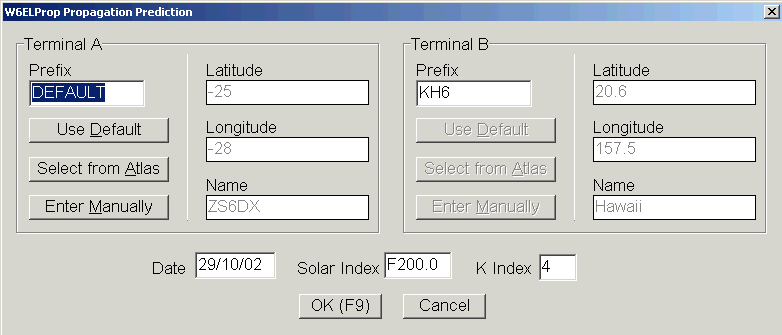
On the Application Level
.Rudi – ZS6DX – [email protected]
Propagation prediction software:
There are many ways of DX'ing, often just listening on the air is fine but if this is the only way you can often miss some good openings. If you want to work a station in a particular part of the world it is often better to try and find out when the best times would be and what frequencies would be best. With software like W6ELProp this has become easy for anyone with a computer in the shack.
W6ELProp™ is a computer program for predicting ionospheric (sky-wave) propagation between any two locations on the earth on frequencies between 3 and 30 MHz. W6ELProp runs under the Microsoft® Windows® operating system. It is the Windows version of the earlier MINIPROP™ and MINIPROP PLUS™ propagation prediction programs that ran under the MS-DOS® operating system. Some of our readers might be familiar with these programs, I have often used them in the past but W6ELProp is far more user friendly. W6ELProp's predictions is also a lot more accurate due to new algorithms used to make the actual prediction. These older DOS based programs employ a unique mode-searching algorithm that takes into account the D, E, and F layers of the ionosphere when computing predicted received signal levels. The algorithm searches through the potential ionospheric modes (combination of E and F hops) and finds the mode yielding the strongest received signal. Signal levels and other useful information for this strongest mode are calculated for up to ten HF frequencies of your choice and for every half hour of the day. Maximum usable frequency (MUF) calculations use a superior F-layer method developed at the BBC by Raymond Fricker, combined with the E-layer method presented in a report of the International Radio Consultative Committee (CCIR) of the International Telecommunication Union.
To get best results with W6ELProp you need a PC running Windows 95 or above with a screen resolution of 800 by 600 pixels and a minimum colour setting of 256 colours. This will allow you to see the maps in detail but it will still work if you have a lower resolution screen.
Apart from making predictions of times and frequencies to work into a specific part of the world W6ELProp will also let you print great circle maps centred on your QTH or any where in the world. This is great to decorate the shack wall or to see at a glance where to aim your antenna.
To make a prediction using W6ELProp you need to input some information into the program. The first thing the program needs to know is where you are, here you can enter your prefix (ZS) and the program will pick up from the database your co-ordinates, once this is set-up you can enter any valid pre-fix to make a prediction. The program will also ask for the solar flux number or solar spot count along with the current value of the A index. These figures can be found on the Internet or you can listen to WWV on 15Mhz.
Once you have entered all the needed information you cal click on OK or Press F9 to continue.

The program will then show you a summery of the information you have entered along with some additional information pertaining to the prediction.
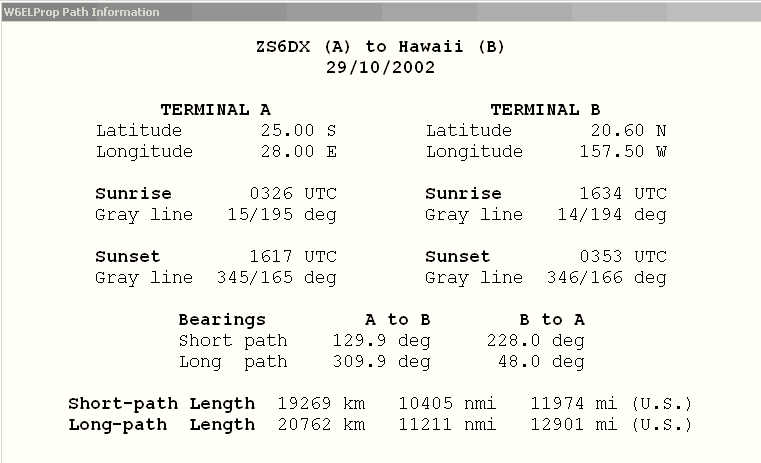
The program will then do the calculation and prompt you to display the results in a table format.
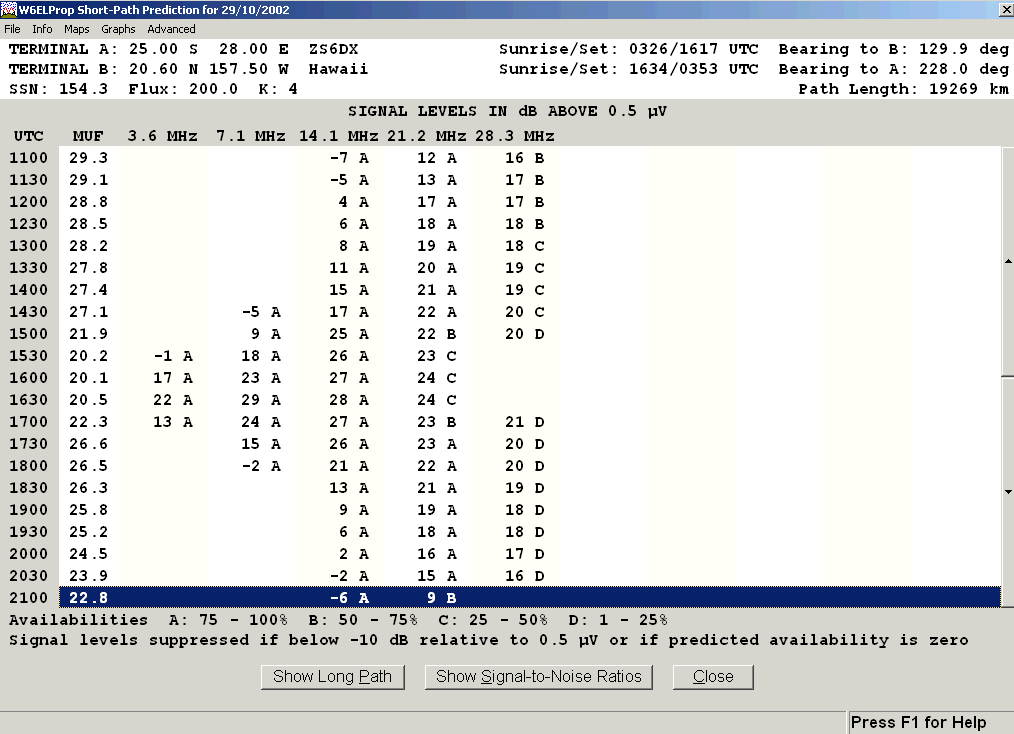
On the left side you will see the time, in UTC, with the predicted MUF next to it. The next five columns show you when each band should be open to the area you want to work, the higher the value in the column the better the conditions would be with a value A being 75-100% chance of a contact down to a D with 1-25%.
At this point you can choose to display additional information like a graphical view on a flat or great circle map.

On this screen you can also enter a different date, in the future, to get a prediction for that day. Clicking on Auto Update will let the program update the information and the map on the screen at a pre-set interval.
If you are interested in the general MUF (Maximum Usable Frequency) you can also get W6ELProp to display the predicted values for the day in a graph format.
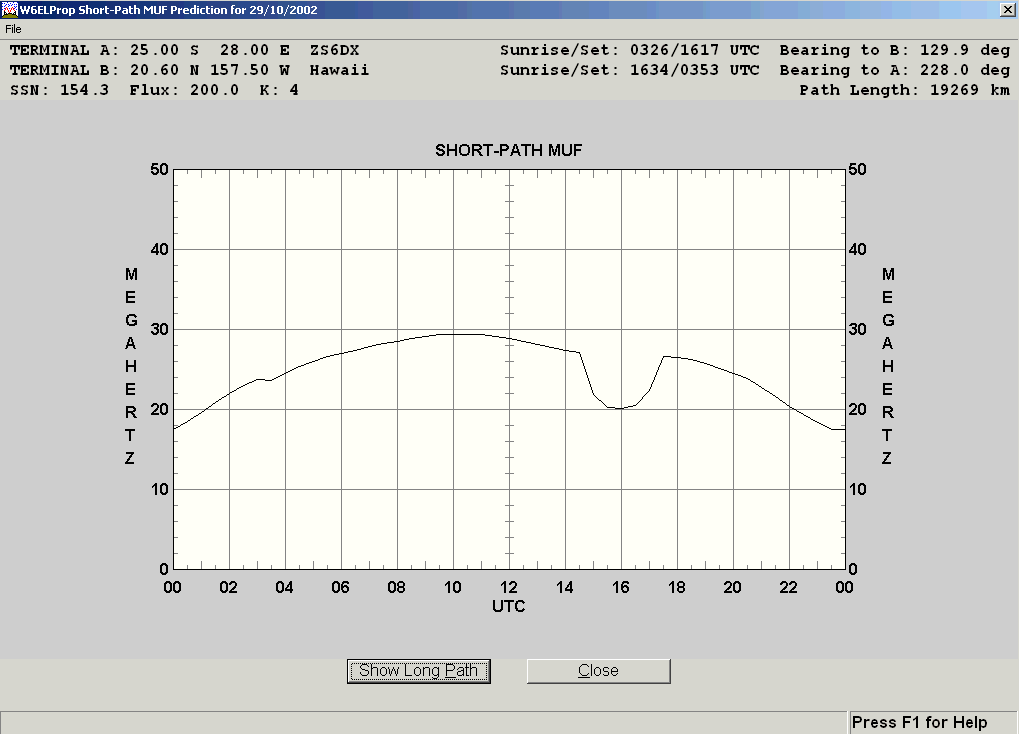
During all this you have the choice to display information on short or long path directions, often one would be open and the other not so do not give up if you do not see an predicted opening at first.
A different way of looking at it is to display the information as a signal to noise ratio graph, this could be useful depending on your equipment and location, if the predicted signals are weak and you have a small antenna or noisy location you could have a problem.
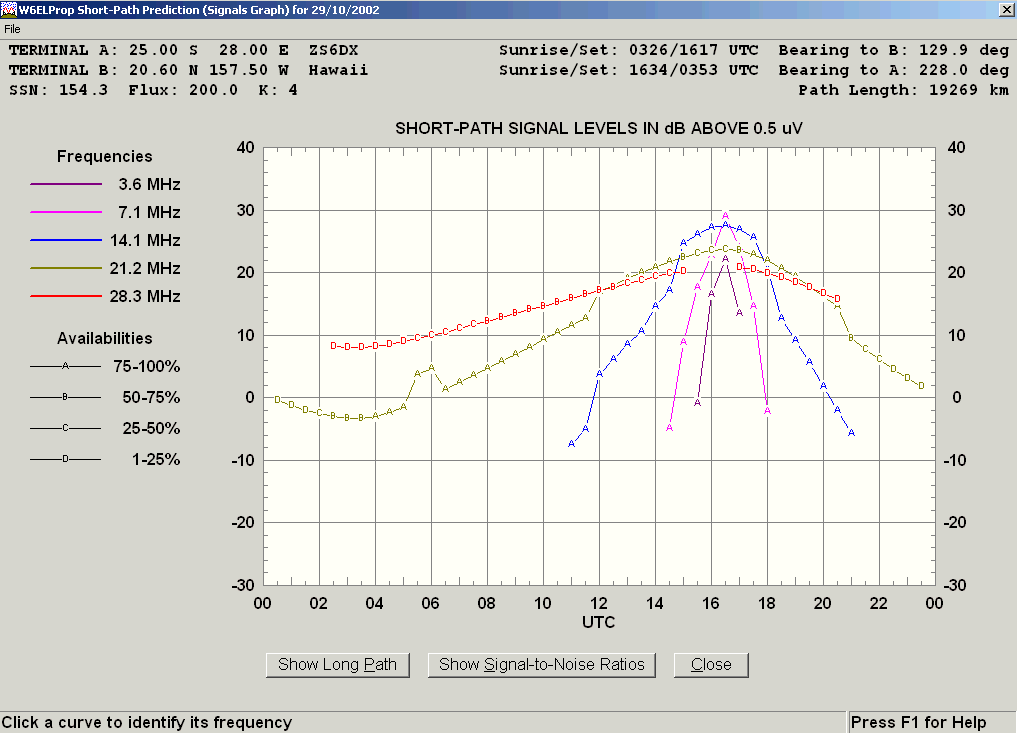
If you want to make a prediction or predictions for some time in the future you can run multiple predictions as a "Batch" job, this can then be printed out to take along on a Dx'pedition or portable trip.
Included in W6ELProp is a complete listing of DXCC entities, you can list this according to prefix or name of the entity, this is useful if you are not sure of a prefix to enter into the program. You can update this list if you need to as well.
There are several other propagation prediction programs available today, some of them are quite expensive but few will give you more accurate predictions or are as easy to use. W6ELProp is available free from the Internet. If you would like to download the software it is available from my web page at www.qsl.net/zs6dx , look under Ham Software Favourites for W6ELProp.
So, now you have no more excuses for missing that rare one!
Please keep the comments coming and let me know if there is specific software you would like to see reviewed.
Till next time have fun,
73, Rudi de ZS6DX